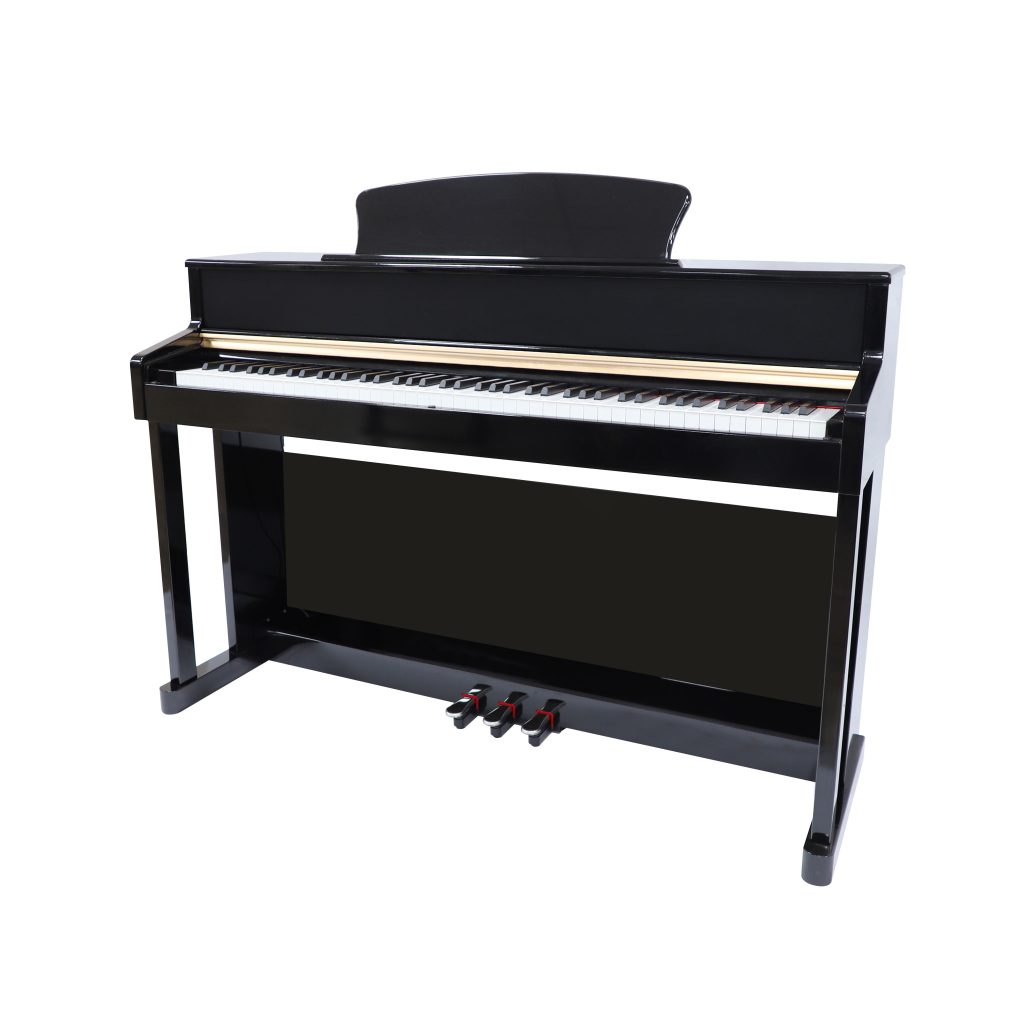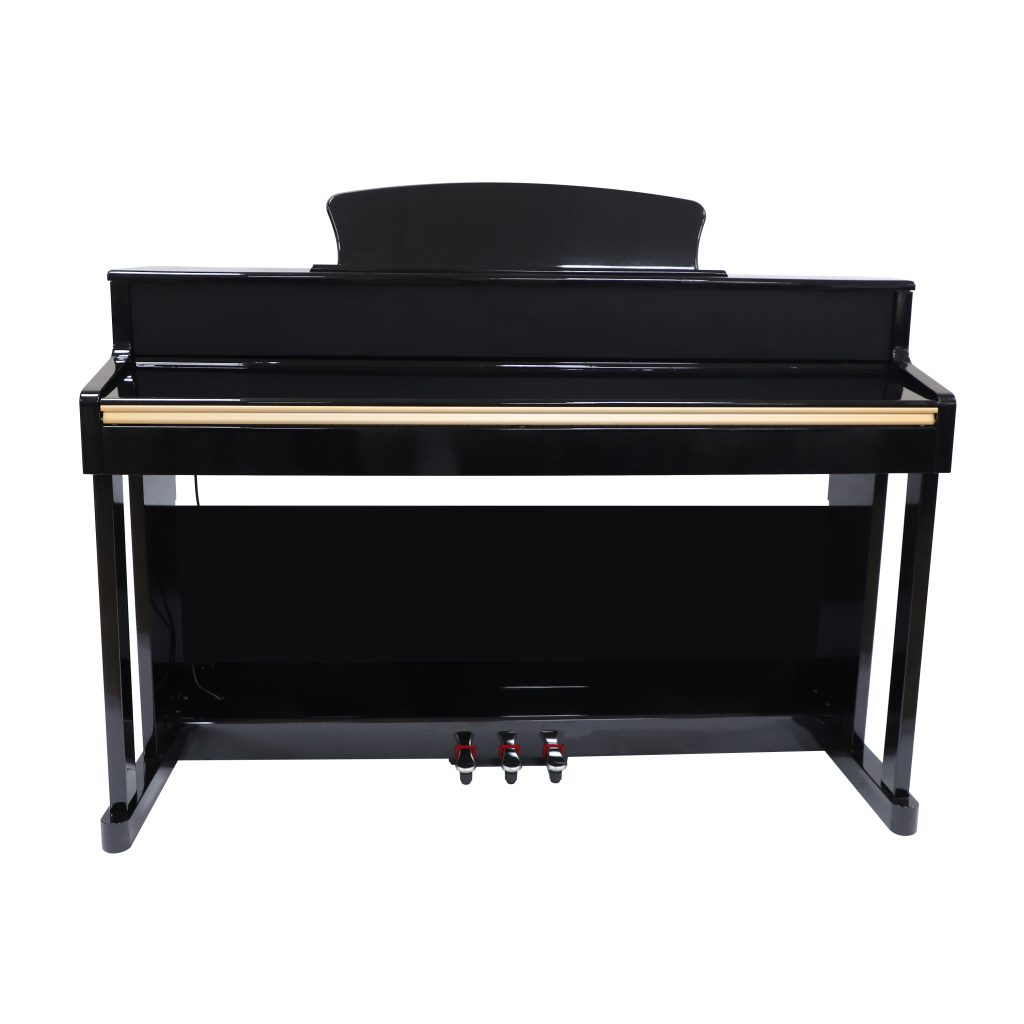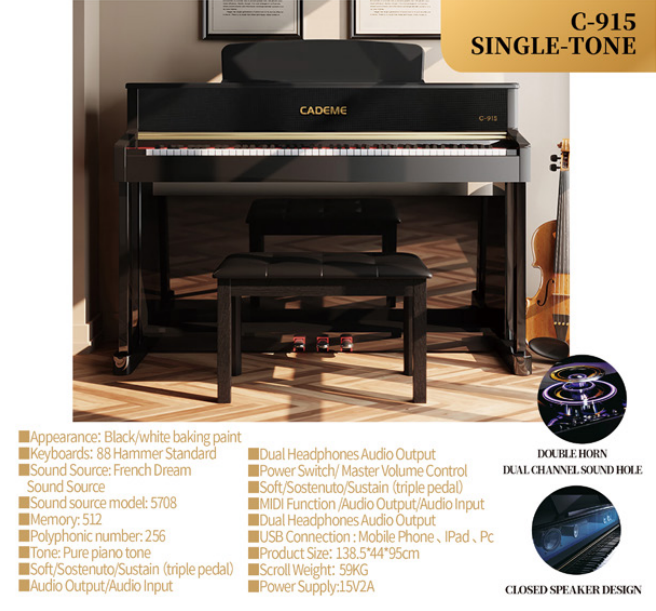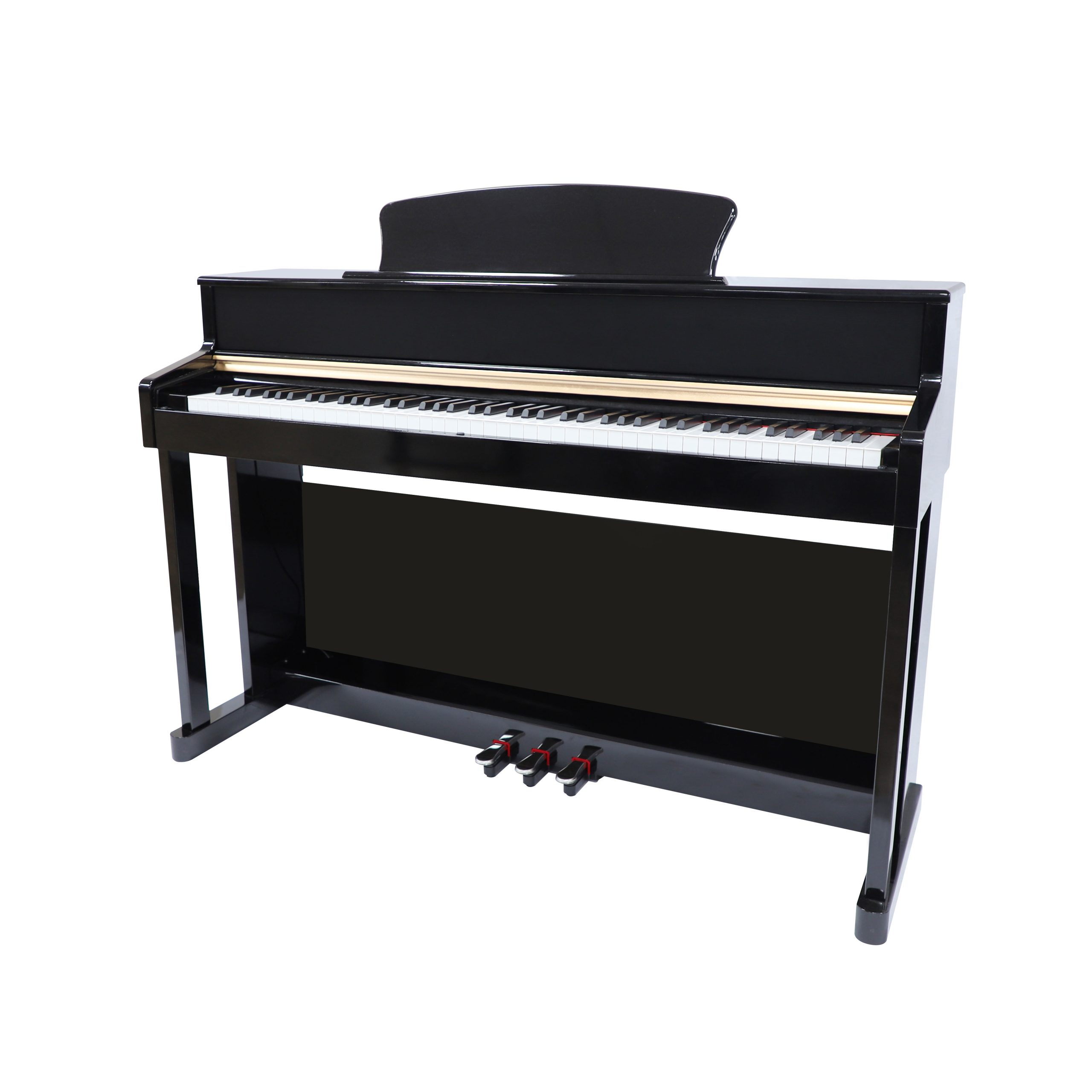Why Digital Pianos Are Ideal for Families
For families looking to introduce music into their homes, a digital piano is a fantastic choice. Unlike traditional acoustic pianos, digital pianos are compact, lightweight, and space-saving, making them perfect for apartments or homes with limited space. Additionally, they offer numerous benefits for children’s musical education, acting as an excellent tool for early musical exposure and development.
Space-Saving Design: Perfect for Any Home
One of the most significant advantages of a digital piano is its compact and efficient design. Unlike traditional acoustic pianos, which are large and heavy, digital pianos come in sleek, modern designs that fit easily into small spaces. Many models feature a foldable or slim structure, allowing them to be placed in a corner or against a wall without taking up much room. Some models are even portable, enabling families to move them around effortlessly.
Comparison of Digital and Acoustic Pianos in Terms of Space
| Feature | Digital Piano | Acoustic Piano |
|---|---|---|
| Size | Compact & slim | Large & bulky |
| Weight | Lightweight | Heavy (300+ lbs) |
| Portability | Easy to move | Fixed position |
| Storage Option | Can be folded or disassembled | Permanent fixture |
As seen in the table, a digital piano is far more convenient for households that may not have dedicated space for a large musical instrument.
Perfect for Families with Children
A Gentle Introduction to Music
For families with young children, a digital piano serves as an ideal first instrument. Learning the piano from an early age helps develop cognitive skills, improves memory, and enhances hand-eye coordination. Digital pianos provide adjustable volume control, preventing excessive noise, which can be a concern with acoustic pianos.
Child-Friendly Features
Many digital pianos come with features designed specifically for young learners:
- Built-in learning programs: Interactive tutorials and guided lessons.
- Headphone compatibility: Allows silent practice without disturbing others.
- Recording functions: Helps children track progress and stay motivated.
- Fun sound effects and rhythms: Keeps kids engaged and encourages creativity.
These features make digital pianos far more appealing and useful for young learners than traditional pianos.
Technology Enhancements for a Better Learning Experience
Interactive Learning Apps and Connectivity
Modern digital pianos support Bluetooth and USB connectivity, allowing families to connect the instrument to learning apps on tablets, smartphones, or computers. Some of the most popular apps include:
- Simply Piano – Step-by-step lessons for beginners.
- Flowkey – Interactive lessons with real-time feedback.
- Yousician – Fun, game-like learning experience.
These apps provide an engaging and interactive way for children and beginners to learn at their own pace.
Weighted Keys for a Realistic Playing Experience
A common concern among parents is whether digital pianos provide the same feel as an acoustic piano. Many high-quality digital pianos feature weighted or hammer-action keys, replicating the touch and response of an acoustic piano. This ensures that children develop proper finger strength and technique as they practice.
Cost-Effective Alternative to Acoustic Pianos
Another significant advantage of digital pianos is their affordability. Acoustic pianos can be incredibly expensive, often costing several thousand dollars. In contrast, digital pianos offer high-quality sound and functionality at a fraction of the cost. Additionally, they require no tuning or maintenance, reducing long-term expenses.
| Factor | Digital Piano | Acoustic Piano |
| Initial Cost | $300 – $2,000 | $3,000 – $10,000+ |
| Maintenance | None required | Regular tuning needed |
| Additional Features | Learning apps, metronome, recording | Limited to traditional sound |
Quiet and Convenient Practice Anytime
For families, especially those living in apartments or shared spaces, noise levels can be a major concern. Unlike acoustic pianos, digital pianos come with volume control and headphone jacks, allowing players to practice silently and at any time. This makes it easier for children to practice without disturbing other family members or neighbors.
Aesthetic Appeal and Modern Design
Digital pianos are designed with modern aesthetics in mind, available in various styles and finishes to complement home decor. Some models even mimic the look of traditional upright pianos while maintaining a minimal footprint.
Popular Digital Piano Designs for Homes
- Slim, modern designs that blend into contemporary interiors.
- Wood-finish models for a classic piano look.
- Portable keyboard-style models for flexibility and ease of storage.
How to Choose the Best Digital Piano for Your Family
When selecting a digital piano for your home, consider the following factors:
- Key Action – Look for weighted or semi-weighted keys for a realistic feel.
- Sound Quality – Choose models with high-quality sound sampling.
- Built-in Features – Consider learning tools, connectivity options, and recording functions.
- Size and Portability – Ensure the piano fits well within your home space.
- Budget – Find a balance between affordability and essential features.
A Smart Investment for Family Music Education
A digital piano is an excellent choice for families, providing a space-saving, affordable, and versatile option for musical learning. With features such as built-in lessons, interactive learning apps, adjustable volume, and realistic key actions, digital pianos offer an engaging and educational experience for both children and adults. By choosing the right model, families can enjoy the benefits of music education without the challenges of traditional acoustic pianos.





